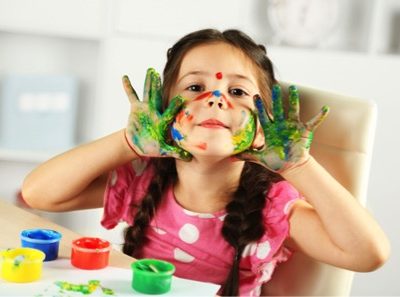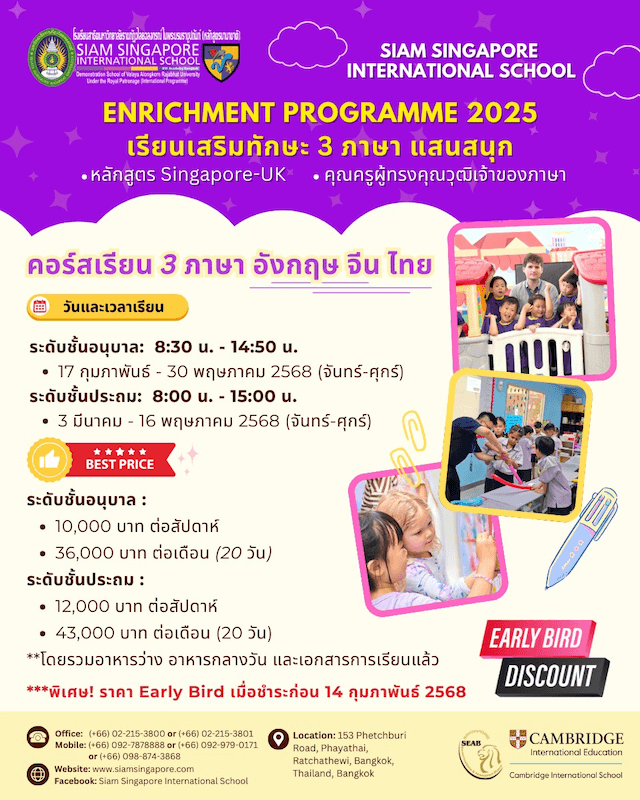As we move further into the new advances in education STEM (science, technology, engineering & maths) isn’t the new buzz word and STEAM is the word that everyone is now talking about.
STEAM is another acronym commonly encountered alongside STEM, where the ‘A’ in STEAM refers to arts, as an equally important part of the STEM concept. The argument for this is that the arts, including liberal arts, fine arts, music and design, are all critical skills and their individual creative thinking processes should be incorporated, where appropriate, to enhance student learning in STEM. Any creative process involves a lot of trial and error, and for students this can be a gentler term for failure. It also builds resilience, teaching students to push through difficulty to reach success which is one of the foundation skills for emotional growth. Allowing students to experience the journey, regardless of the end result, is so important.
The STEM VS STEAM movement has started taking root for the past several years and is now surging forward in education as a positive mode to meet the needs of the 21st century. While continued research has been done on the importance of STEM, it can miss several important components that employers have voiced as critical for our children to thrive in a rapidly approaching future. What is the point of having all these brilliant engineers to construct new roads if we don’t have the architects to design new bridges?
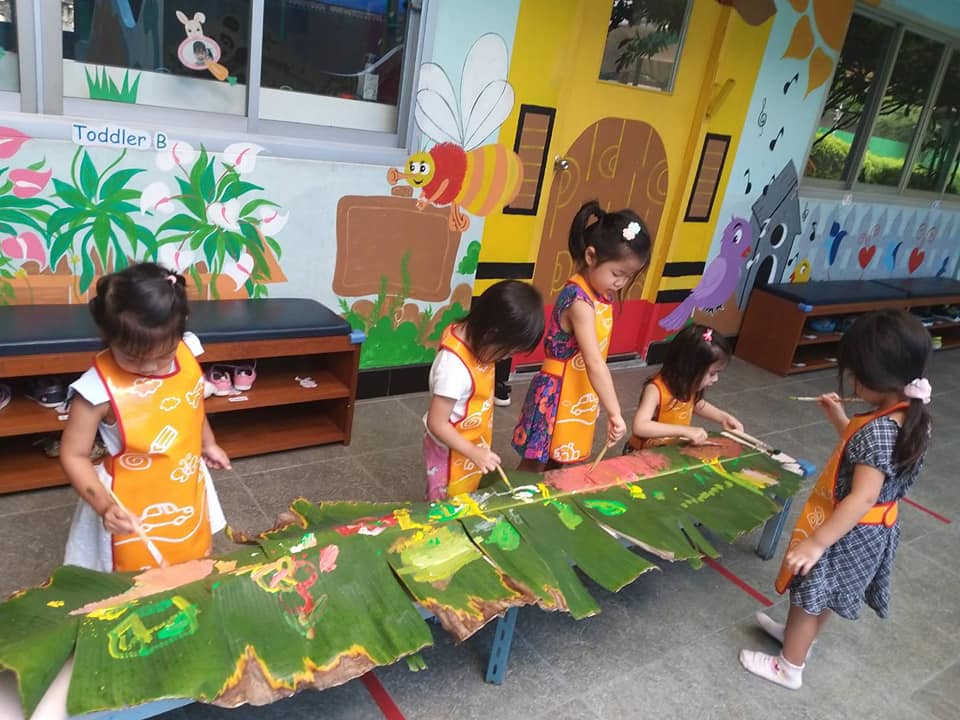
Creativity is a Valuable Skill
The creative arts are often thought of as unimportant, and are frequently the first programs to be cut when funds are low. However, the creative arts not only cultivate children’s imaginations, so that they become more flexible and inventive thinkers, but also help to develop their physical, emotional, and mental capabilities. As such, it is imperative that we work to integrate greater chances for young children to engage in the creative arts, for such measures will provide the foundation for later success.
All too often people outgrow their imagination as adulthood approaches due to an encroaching sense of self-doubt, an ingrained belief that it’s an impractical pursuit, or firm guidance from more experienced grown-ups advising engineering over art school.
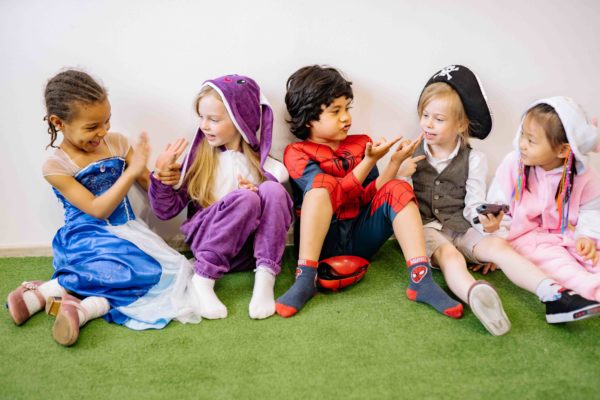
Creativity & Learning
Many years of research have been conducted into the link between creativity and the motivation to learn. When students are focused on a creative goal they become more absorbed into their learning and driven to acquire the skills they need to accomplish the task. The research concluded that when students are able to tie their learning to their personal interests, they have a sense of autonomy and control over their task and creative projects allow space for this and to encourage critical thinking. Give a child a list of elements to learn from the periodic table in a chemistry class and most will try to recall the terms rote fashion and some, non-science minded kids will simply give up with the complexities of the task. Ask the same students to create a poster linking the element to a visual of water or oxygen, the learning takes on a whole new dimension.
STEAM is a great way to take the benefits of STEM and now complete the package by integrating these principals in and through the arts. By including STEAM into new curriculum it allows students to connect their learning in critical areas together with artistic elements and design principals. Teachers who assign classwork involving creativity are more likely to observe higher and more successful levels of problem solving, critical thinking and see their students making better connections between subjects.
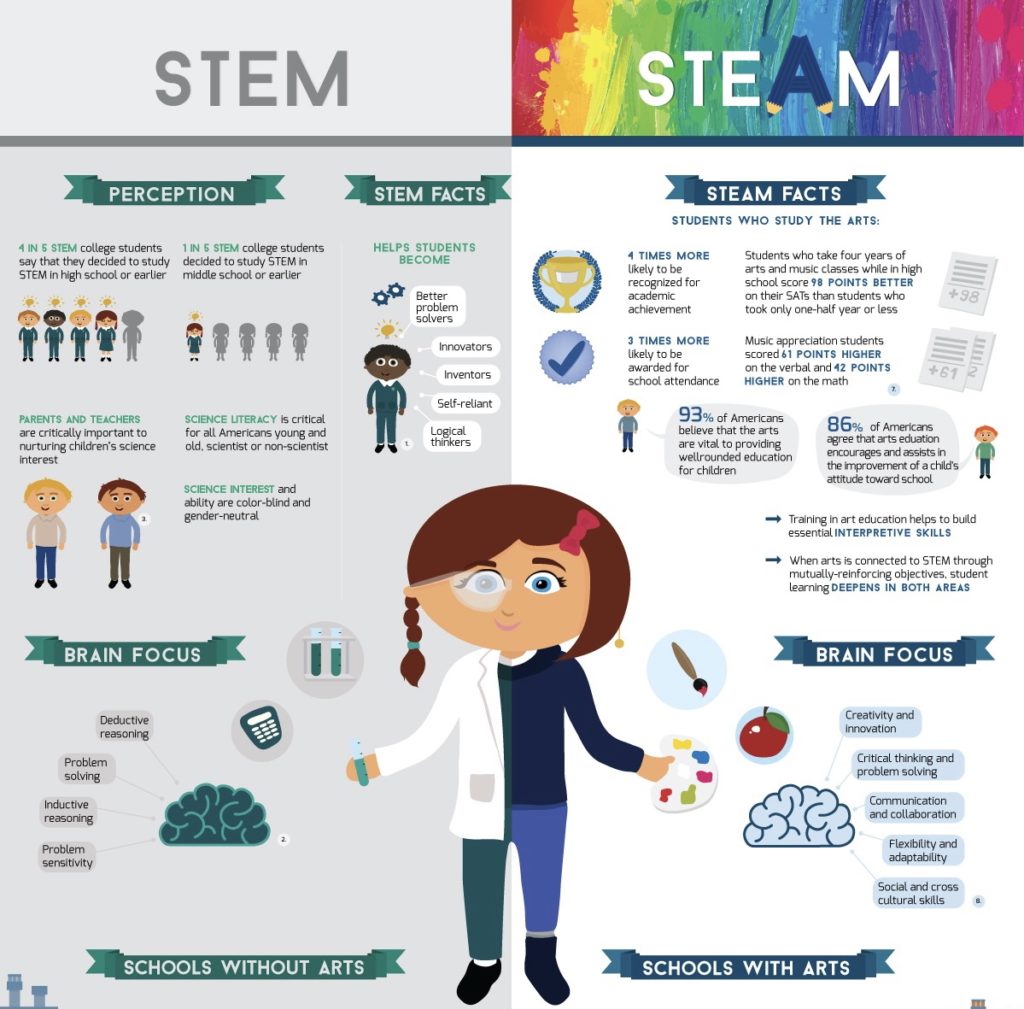
In the time of Leonardo Da Vinci art and science had not yet matured to the state in which they exist today, they coexisted naturally. Moving forward in education it’s inspiring to see that current practices in scientific research have much to gain by involving artists in the process early and often. Artists serve as great partners in the communication of scientific research and when we can encourage our students to embrace the importance of both, we can expect them to navigate us further into the unknown.




